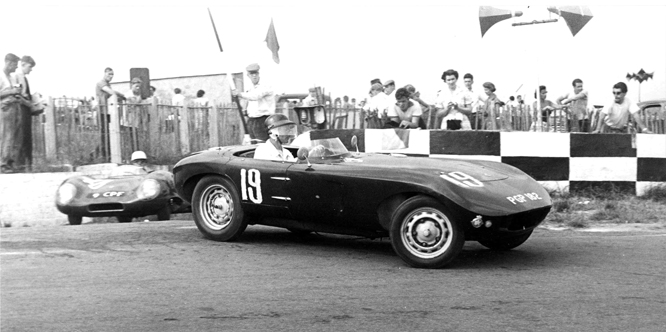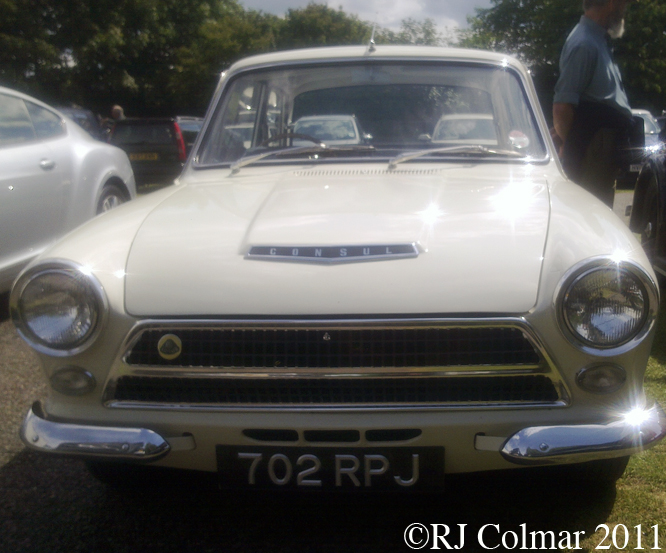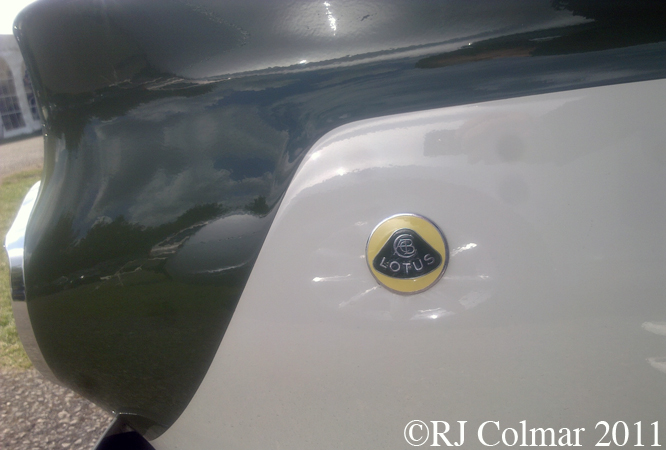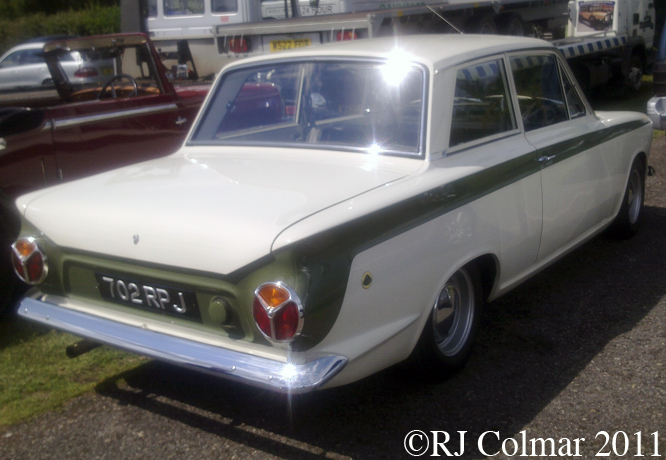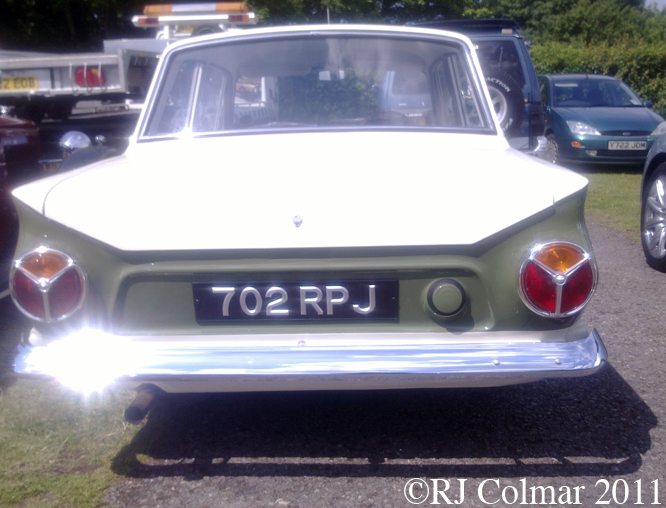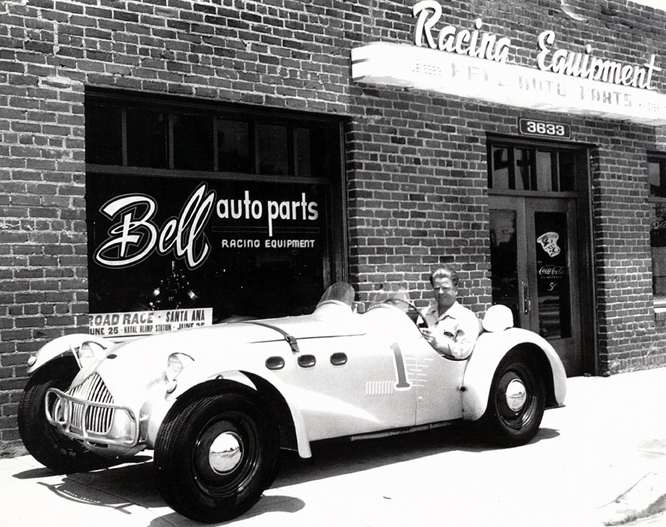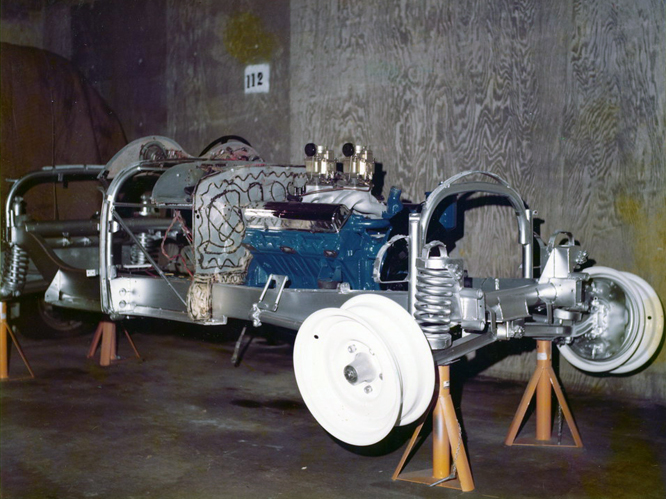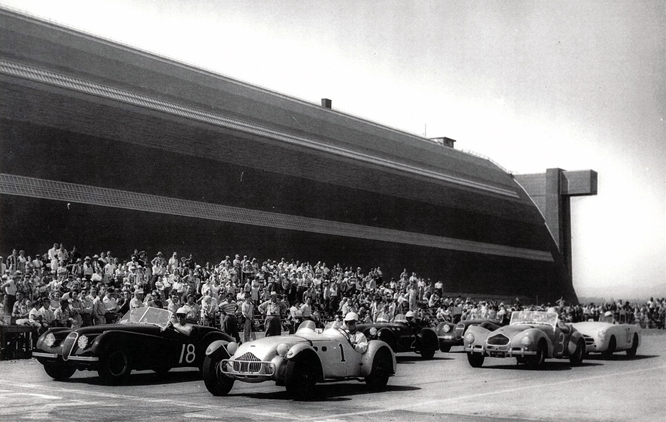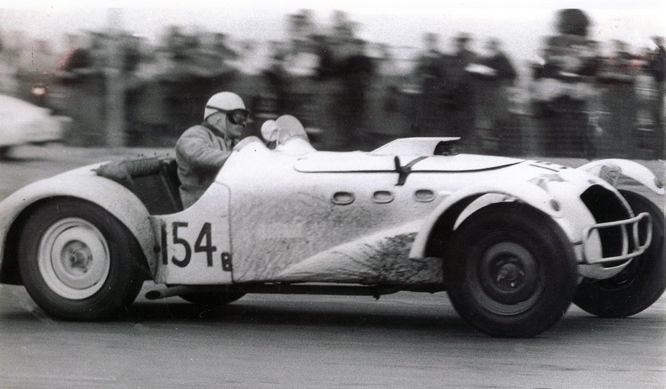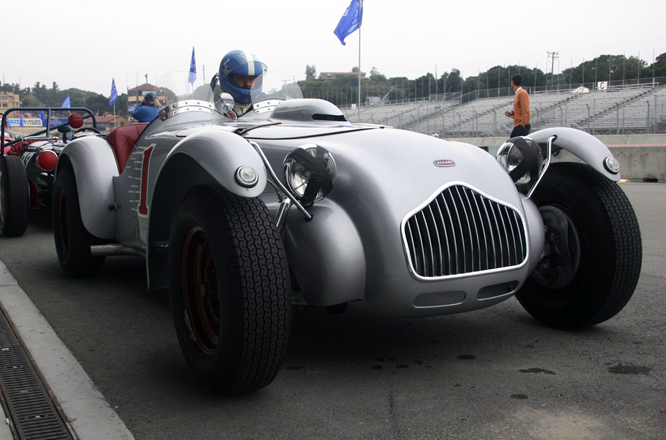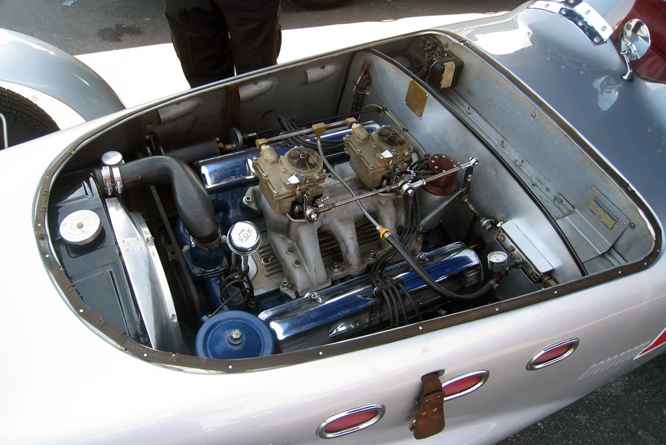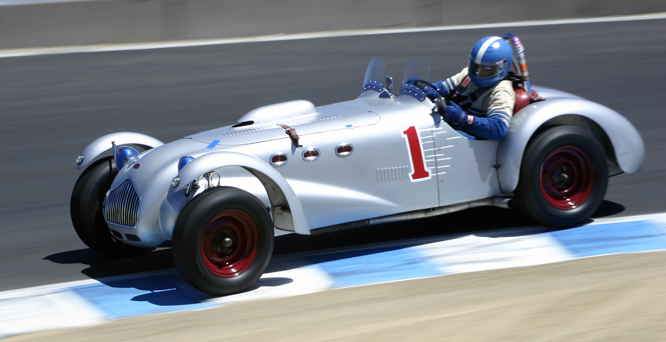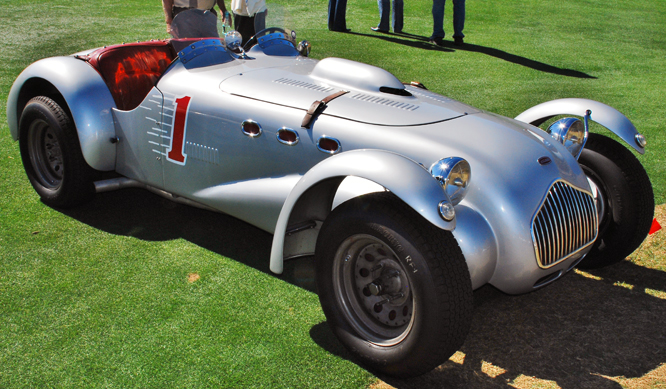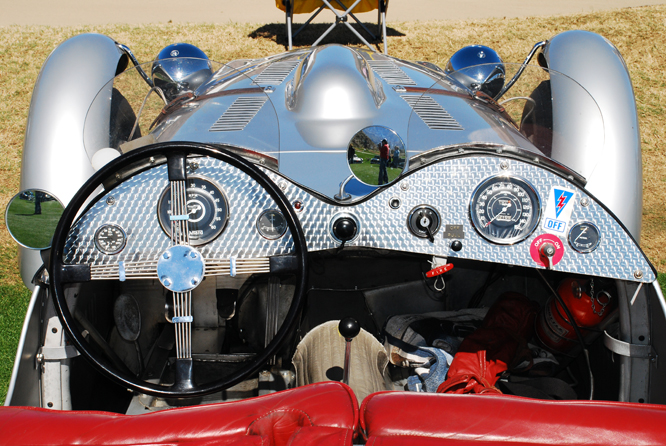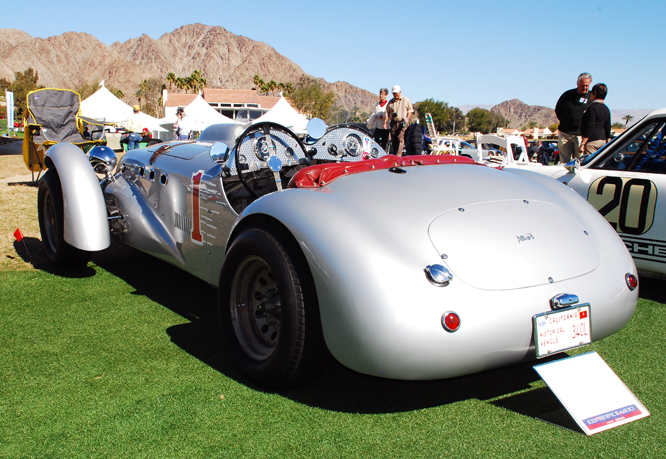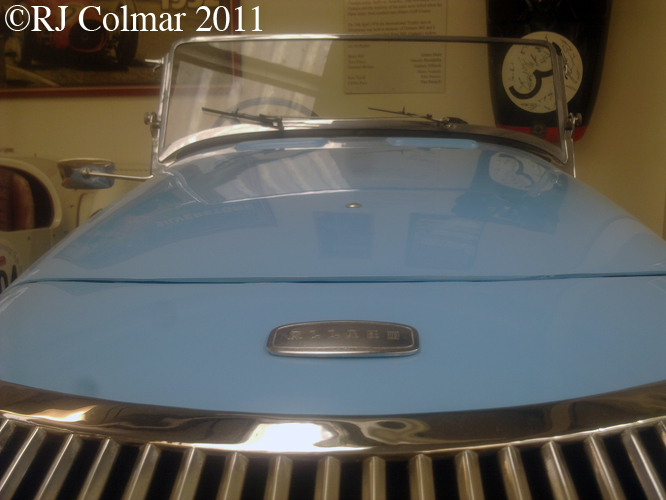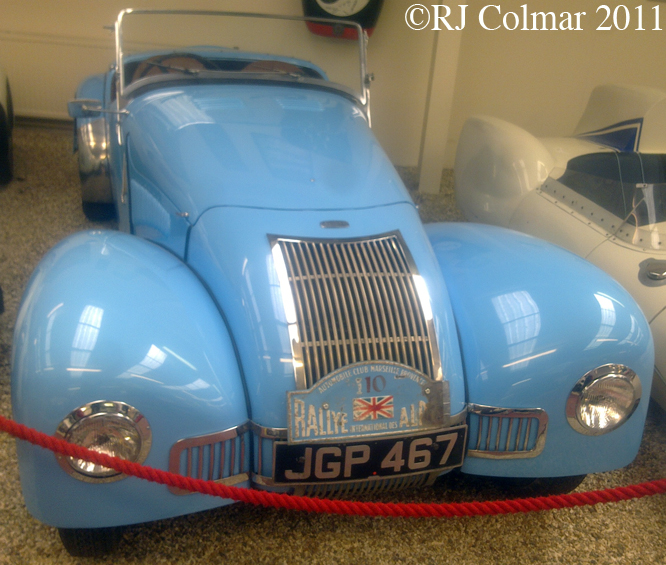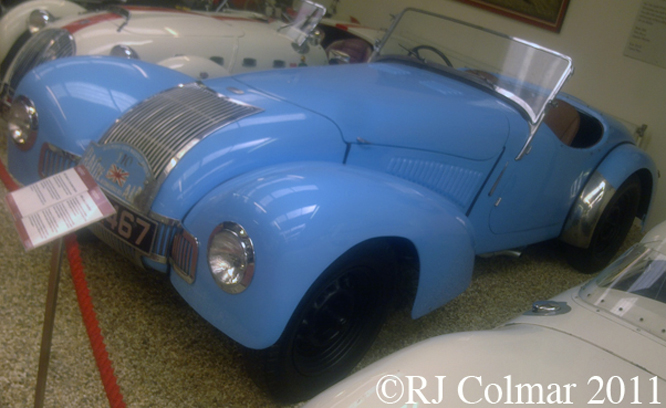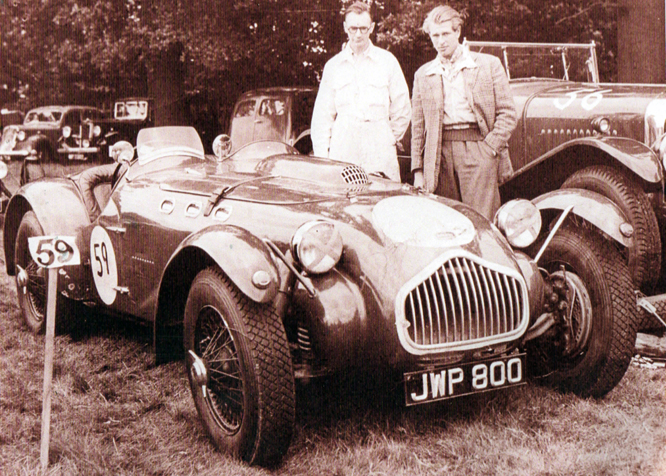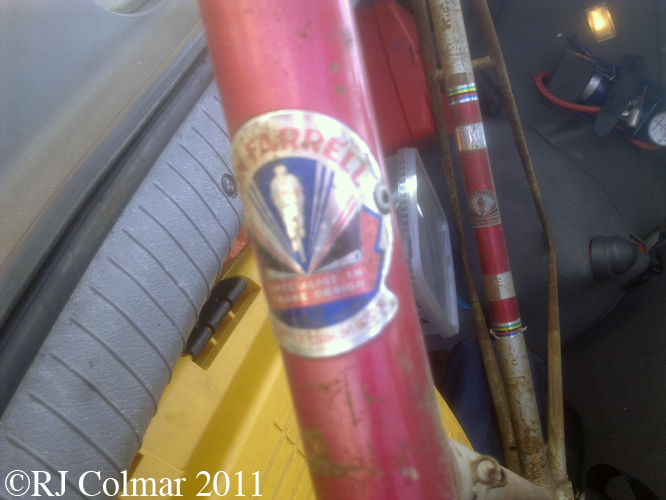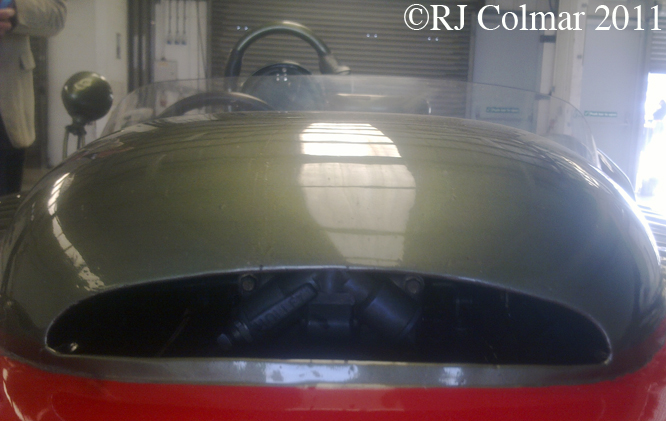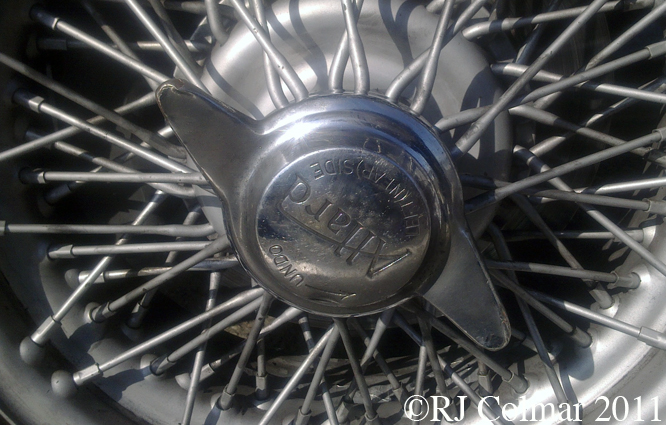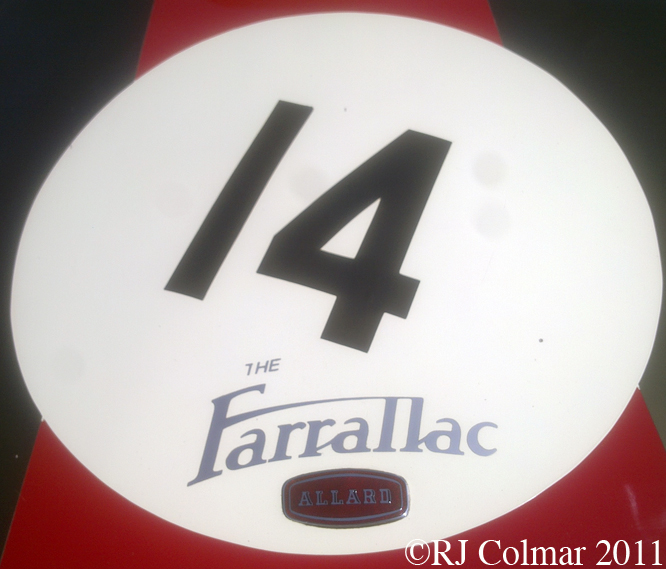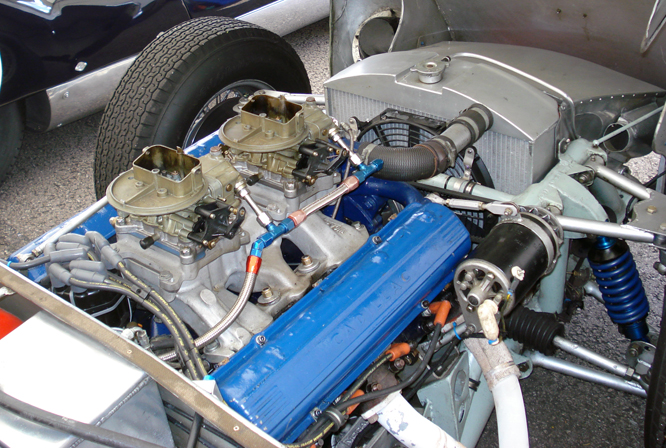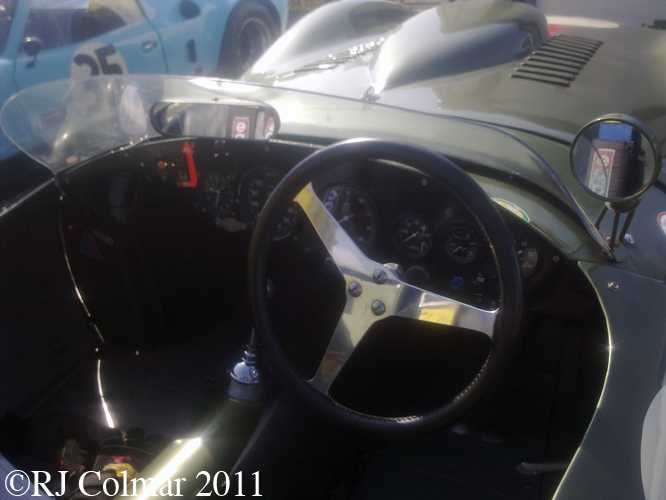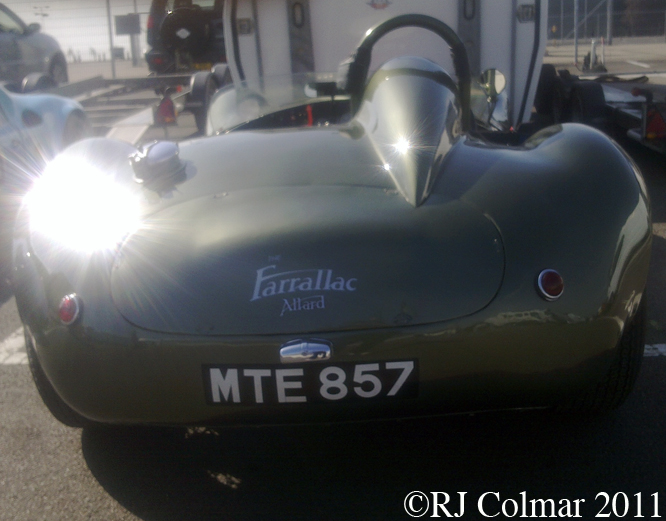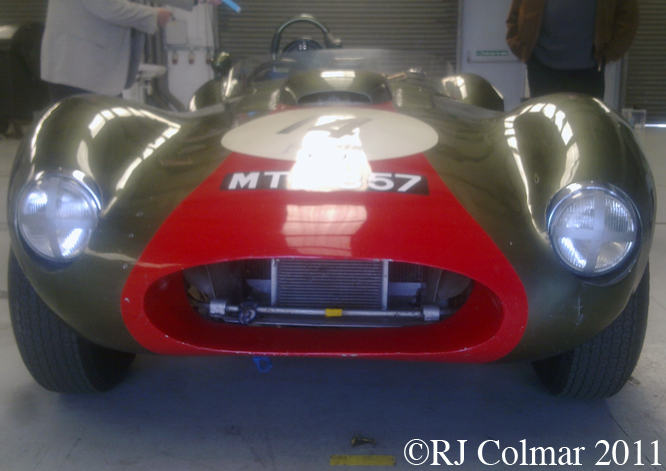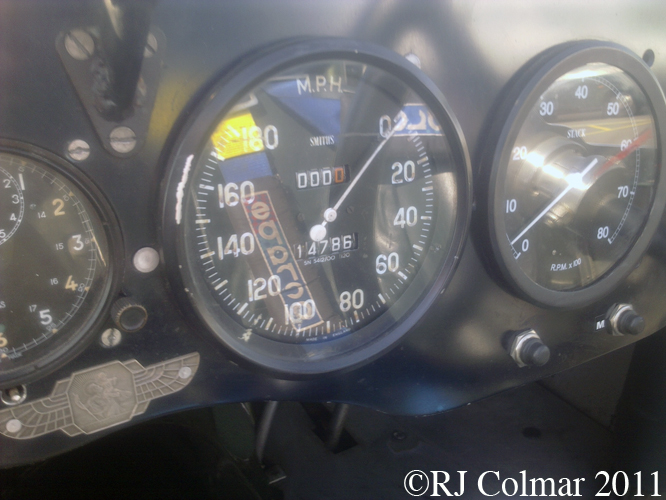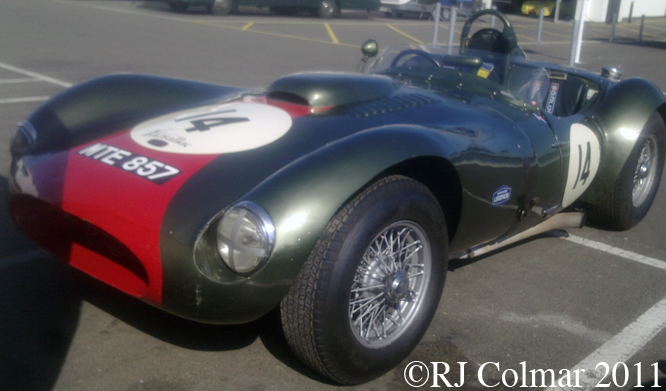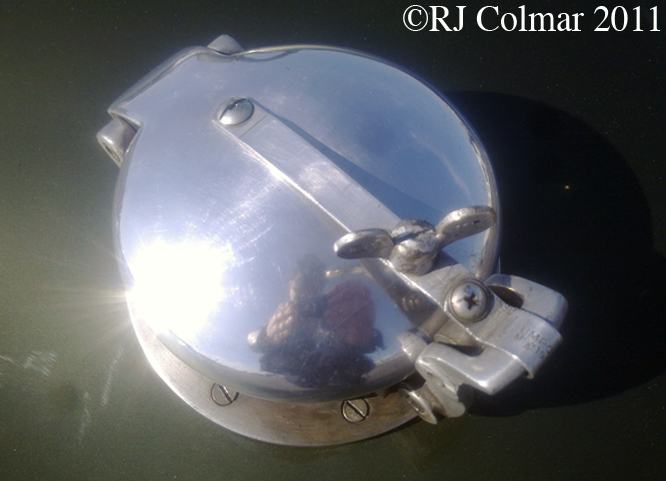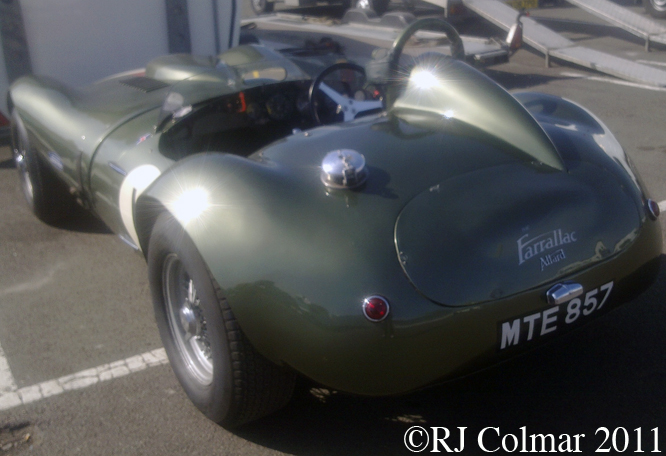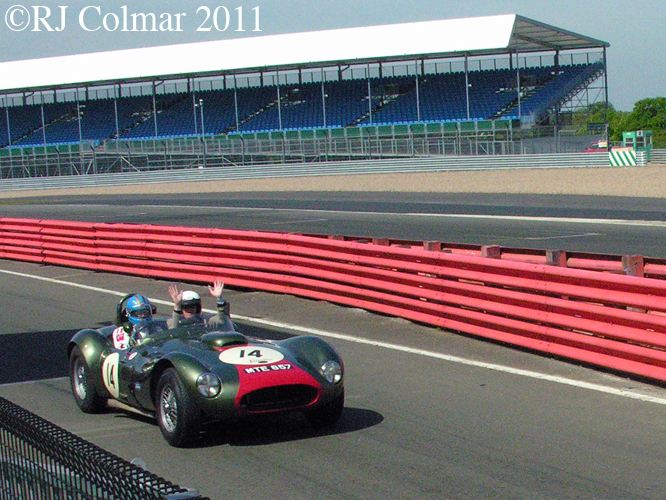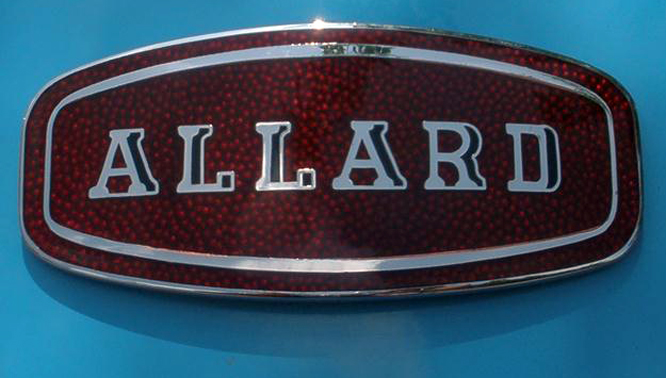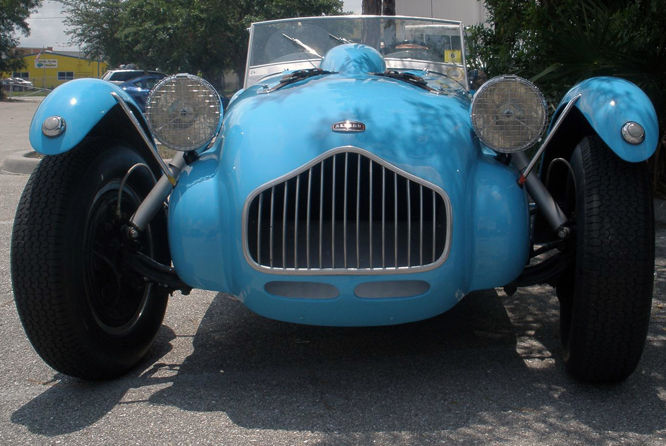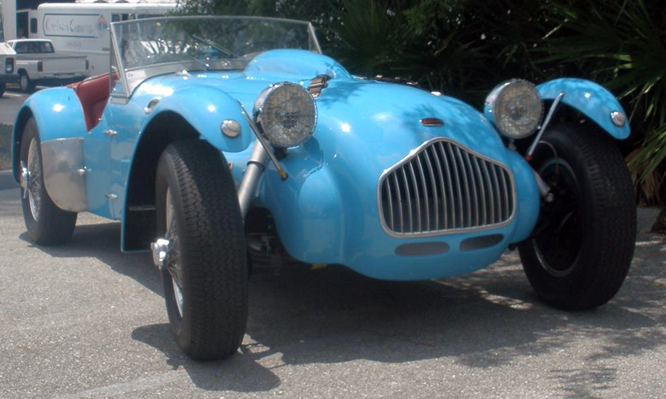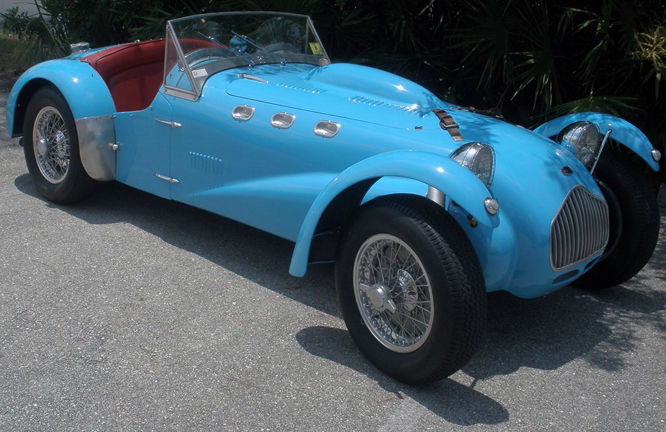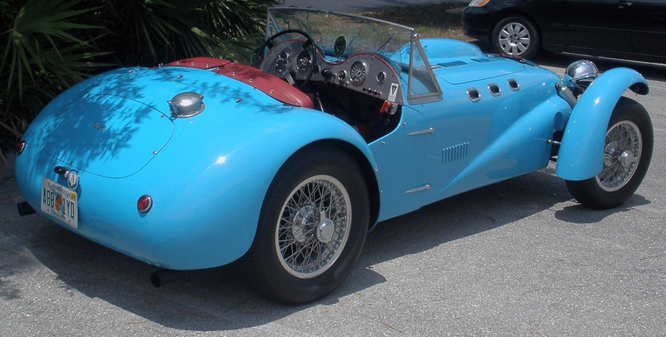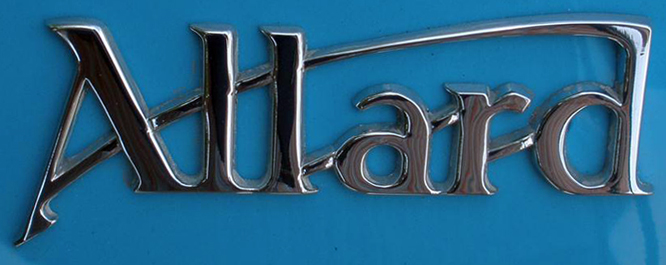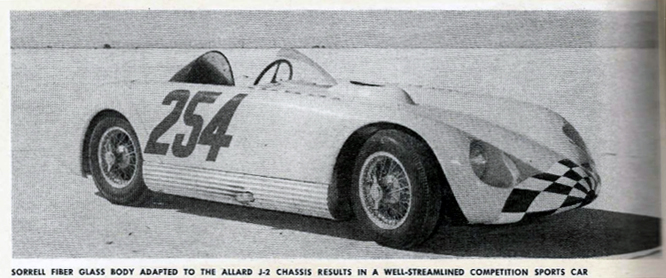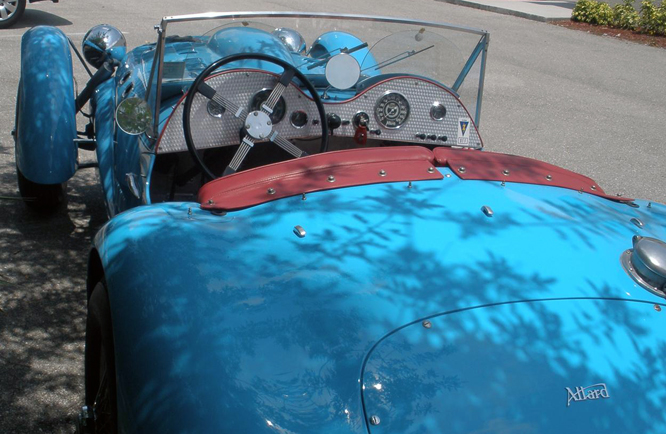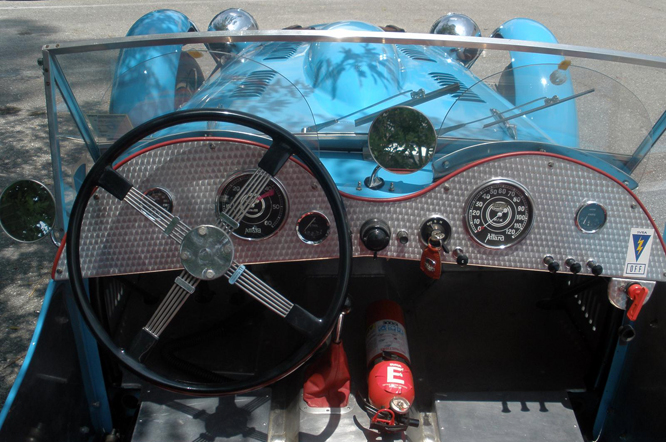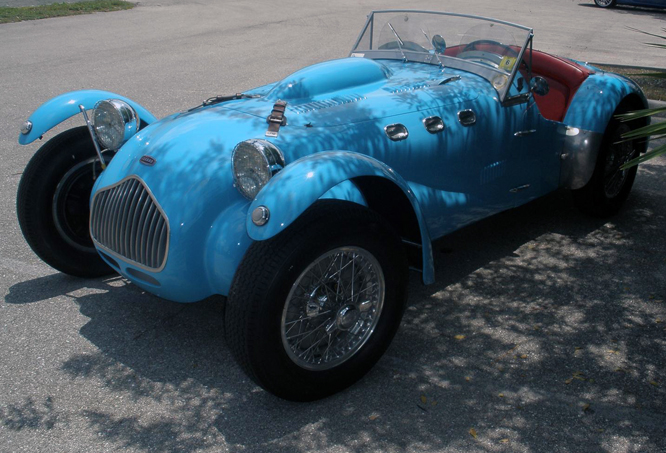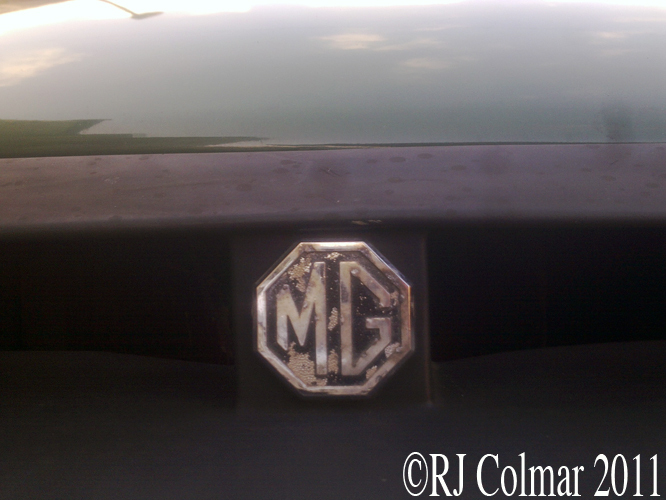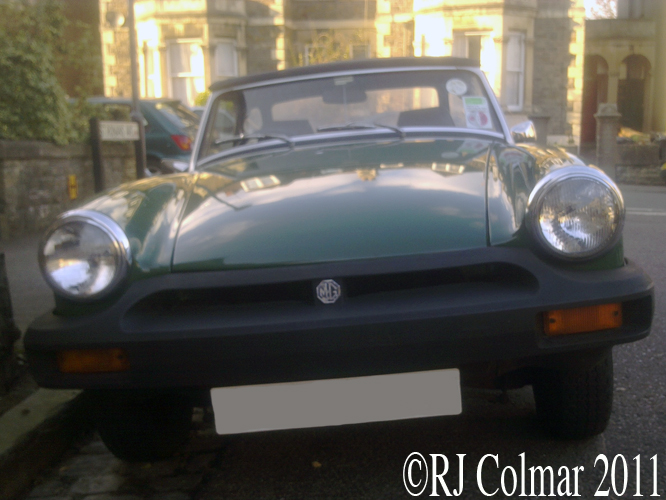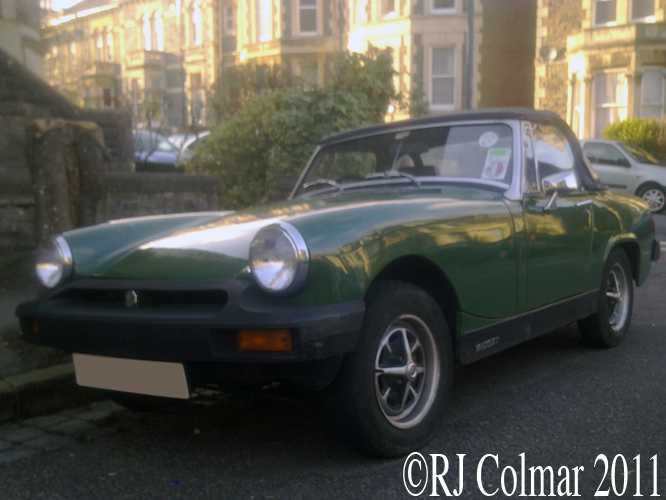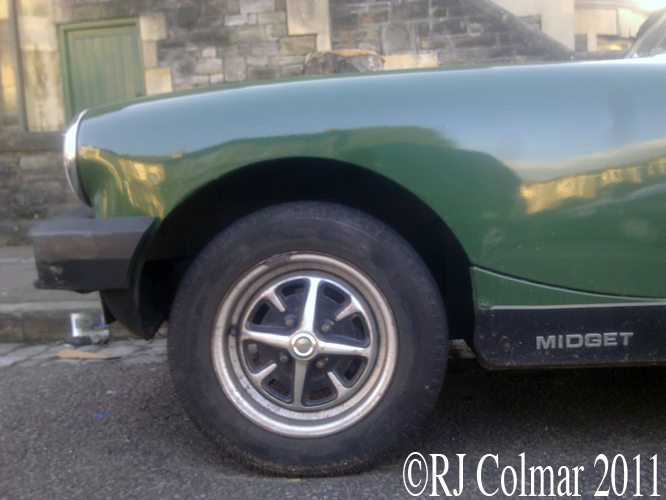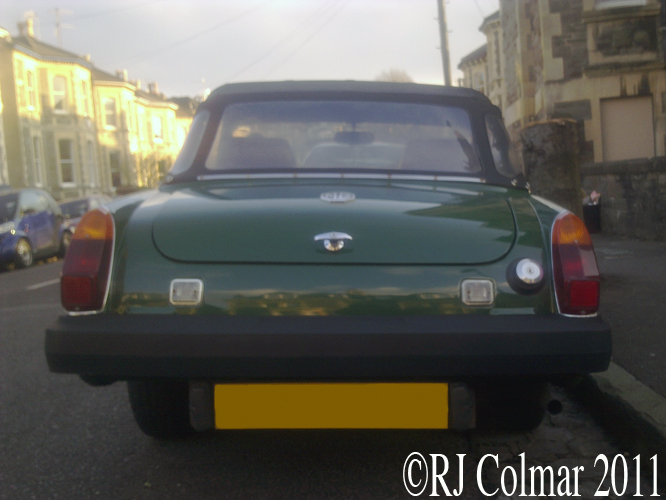In 1942 Peter Kirwan-Taylor was 12 when he returned to England after a temporary evacuation to North America. He accompanied his step father Charles Loraine Hill, a director of Lagonda Cars, on trips to visit Lagonda and Westland the aircraft manufacturer where his interest in design took hold.
After a military career, during which he was member of the British Sking team, Peter settled down to follow his fathers footsteps and trained as an accountant. On the April 13th 1954 in between his 3 nights a week studies Peter found time to purchase and build a new Lotus VI, chassis #34, and decided to design his own body for it.
He provided Williams & Pritchard with the drawings and a claymodel which featured a high crease line and because of the suspension set up when the body was mounted to the chassis the car accidentally had a futuristic wedge appearance due the forward sloping aspect of the crease line.
Peter raced the car several times and as his family and career in finance took off he sold PGP 182 after two years.
Peter Kirwan Taylor in his #19 Lotus VI at Brands Hatch Undated,
Photo Beaulieu National Motor Museum
The exact details of the ownership of PGP 182 from 1956 to 1963 are not recorded however as can be seen on this link we do know Peter’s car made an appearance at Silverstone in June 1957 in the hands of Tony Wilson-Spratt. (See postscript below)
Thomas Kikaldy owned PGP 182 from 1963 to 1969 and he removed the unique body and sold it to an Italian restaurant owner in London and it has not been seen in public since.
In 1983 Len Pritchard, who produced the panels for the original Lotus VI kits, fabricated new panels for PGP 182 in the style of original Lotus VI’s with which the car, seen on this link 4th from right, is fitted today.
Peter Ross of the Historic Lotus Register informs me that the whereabouts of the drawings for Peter Kirwan Taylors bodywork are known and his one off body work could be recreated if some one desired.
As we shall see next Saturday Peter Kirwan-Taylor’s friendship with Lotus founder Colin Chapman grew from the time he purchased PGP 182 and he would design another Lotus which made a larger mark on the Lotus Cars story.
My thanks to Paul Rochdale of The Nostalgia Forum for first identifying PGP 182 as a Lotus VI to Peter Ross from the Historic Lotus Register for details about Peter Kirwan-Taylor and PGP 182 and to Ted Walker aka Ferret Fotographics for permission to use today’s photograph.
Thanks for joining me on this accountants edition of ‘Gettin a li’l psycho on tyres’ I hope you will join me again tomorrow. Don’t forget to come back now !
10/10/11 POSTSCRIPT. Peter Ross of the Historic Lotus Register has kindly sent a few comments about this blog it would appear the photograph in the link is of Ian Duncan at the wheel and the photographer was Tony Wilson Spratt.
Peter also informs me that an article ‘The Story of the Kirwan-Taylor bodied Lotus VI’ appeared in the Historic Lotus magazine issue #64 which can be ordered through the HLR website linked here.

